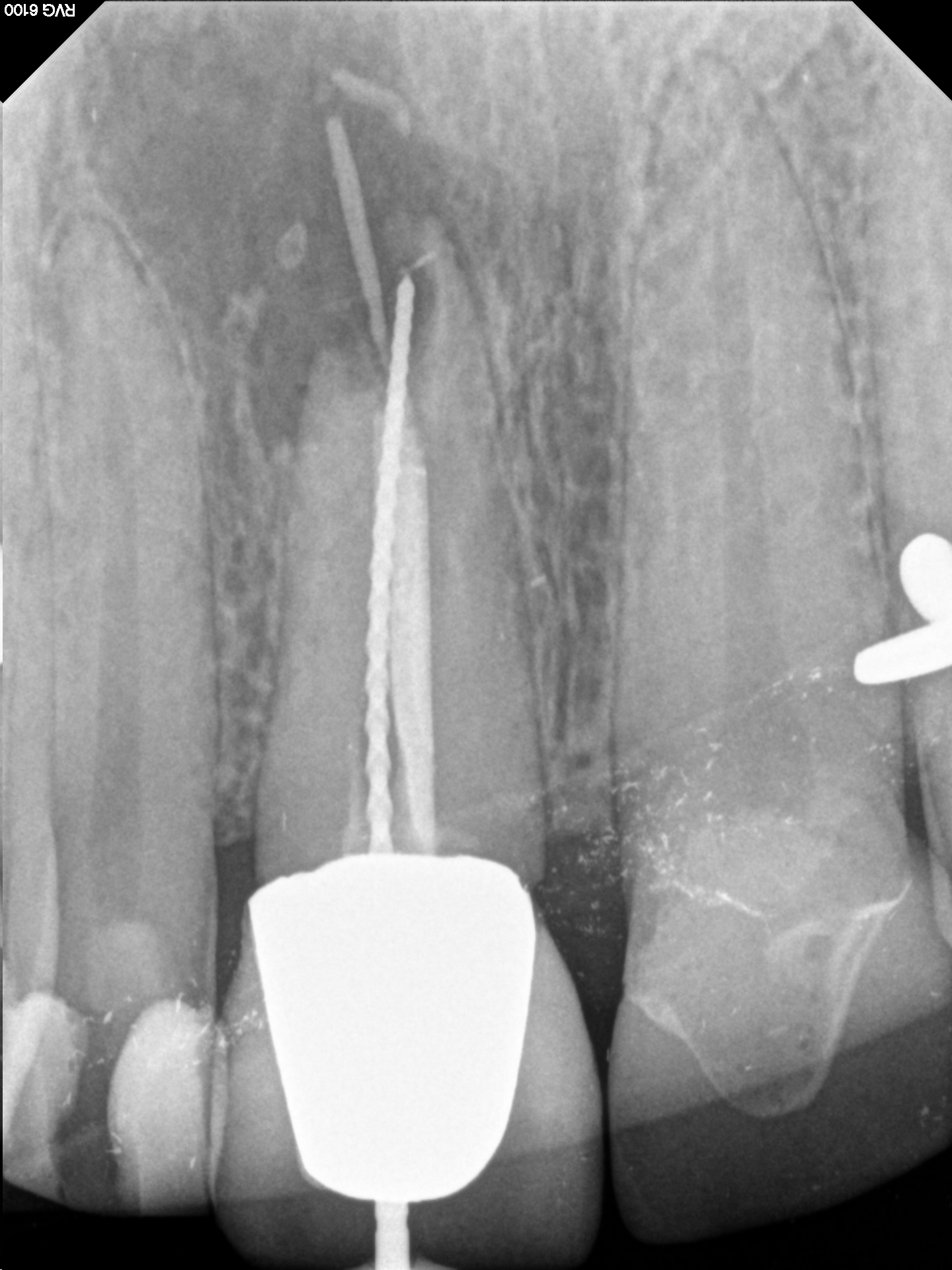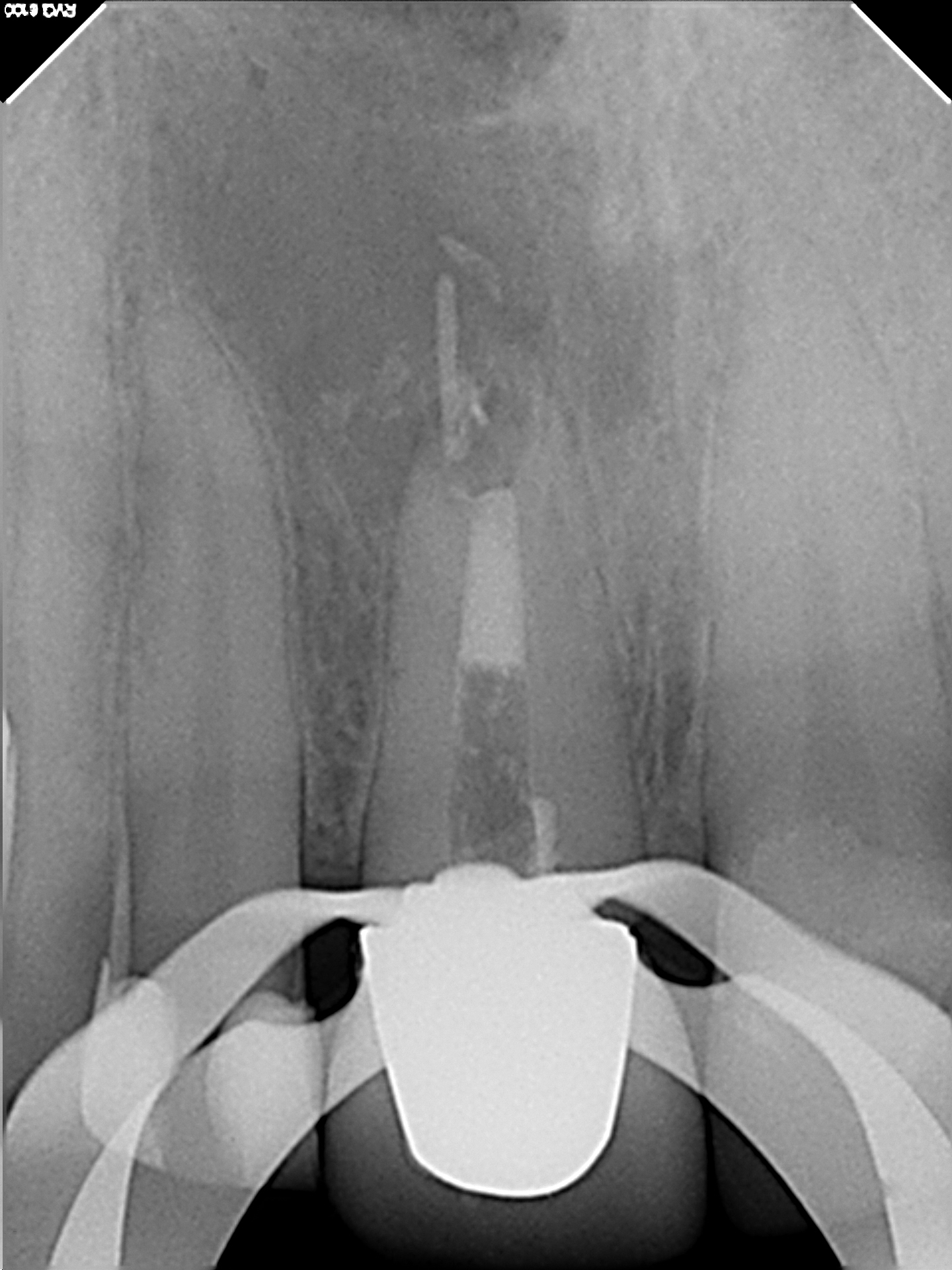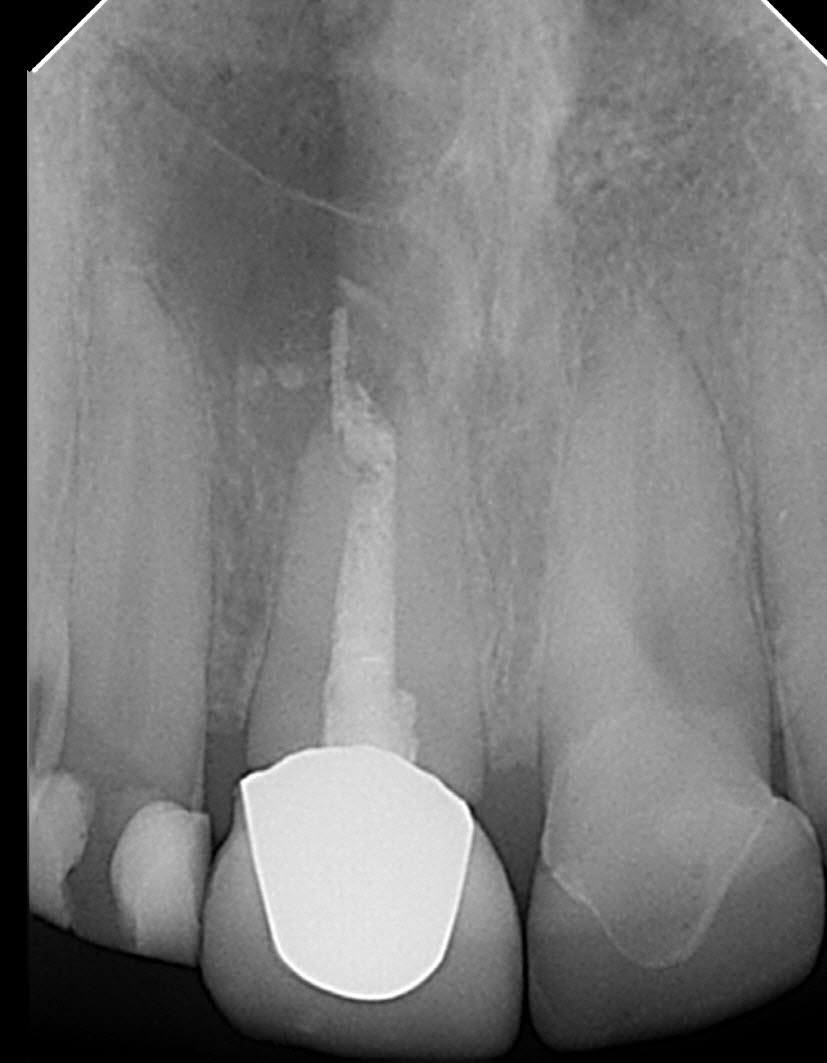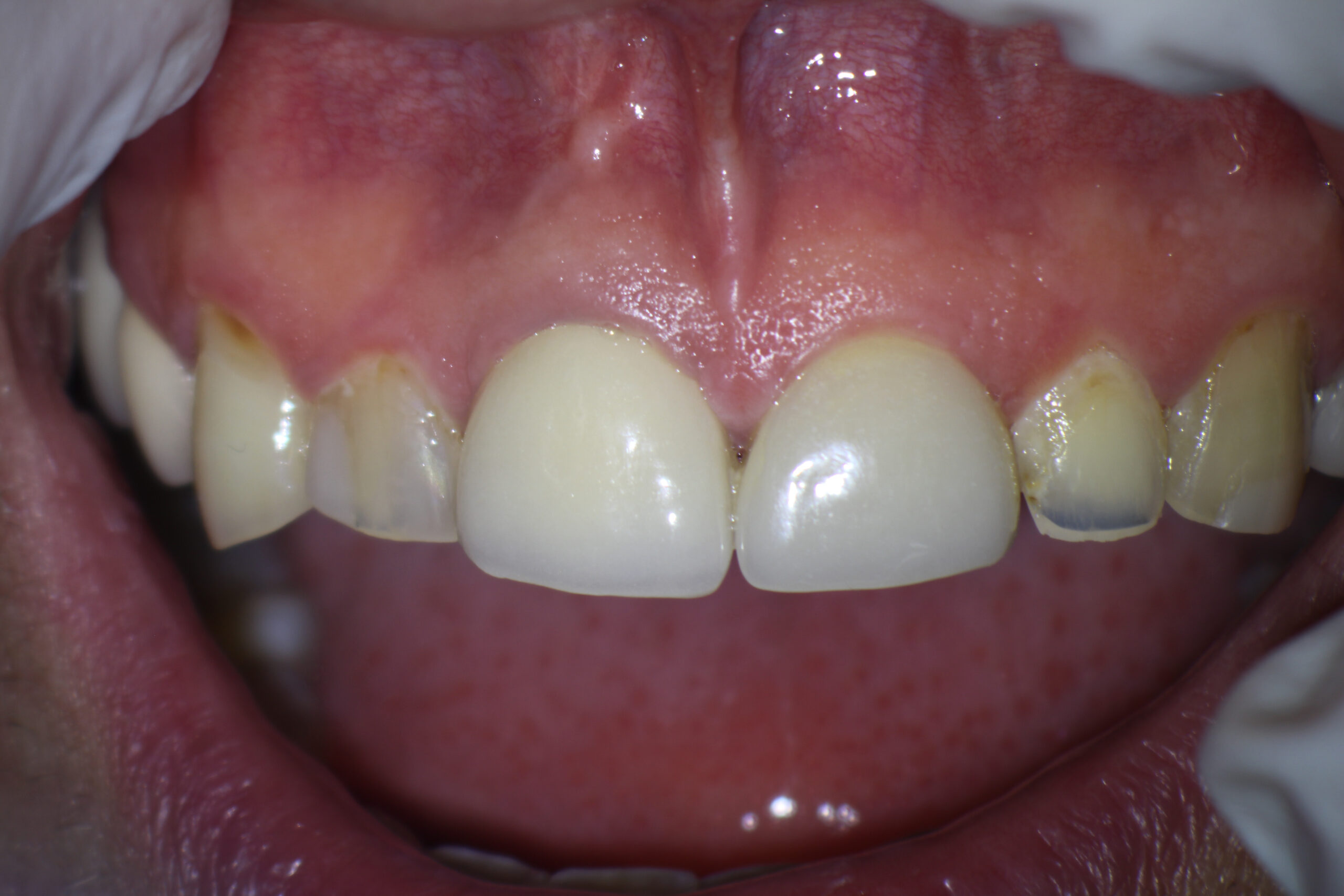Retreatment Avoids Surgery
This patient was referred to me because of persistent apical palpation symptoms and draining buccal sinus associated what the apex of tooth #11. The tooth had been restored with a post and core Crown and there was a large radiolucent finding associated with the apex.


The two options open to us were nonsurgical Endodontic retreatment or possible surgical resection of the root and retrofilling. The patient was happy with the crown and wished to avoid a remake.
Close examination of the root canal filing revealed likely lateral condensation technique with poor obturation density and extrusion of the filling material into the periapex. While this over filling of the canal alone likely did not cause the problem, The lack of canal cleanliness and adequate obturation probably contributed to the chronic inflammatory process which was continuing at the apex of the tooth . This resulted in apical resorption and the persistent chronic lesion/drainage.
We explained options to the patient and they elected for conventional Endodontic retreatment with the understanding that it was possible that surgical procedures would be necessary to ensure adequate seal of the apex. The tooth was accessed and both the post and the gutta percha was removed from the canal. The canal contents were found to be loosely packed and the cones were easily removed intact. Working length was established and confirmed with an EAL, a file/radiograph and paper point technique. Calcium hydroxide was placed in the canal until symptoms (draining buccal sinus and palpation sensitivity) resolved.
After several weeks the patient was brought back for completion of the case at which time the canal was re-irrigated, dried and filled to the predetermined apical measurement with MTA Putty (Endosequence).



The patient was then seen at 1 year postop and was completely asymptomatic. The bone was filling in and he was pleased with the results and the fact that he did not have to have his Crown remade and that apical surgery was avoided.


The patient was seen again at 3 years postop and has remained asymptomatic. Although bone fill is not ideal, he managed to keep his crown and is very satisfied with the result.


